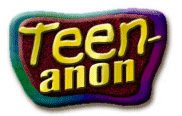
About Alcohol
The effects of alcohol on children and teens
A high number of children have tried alcoholic drinks. One study reports that one in thirty second-grade students have consumed alcohol to intoxication.(1) Two thirds of senior high school students report using alcohol at least once a month. One out of twenty high school seniors drink on a daily basis.(1) The 1988-1989 survey of substance abuse among Maryland adolescents reports that 50.5% of sixth graders have tried alcohol and that 9.5% use alcohol once a month or more frequently. Only about 1.2% of this group uses alcohol several times a week or more. The same survey indicates that among twelfth graders the respective percentages are 87.3% who have tried alcohol, 60.2% who use at least once a month, and 13.5% that use several times a week or more (2). Alcohol-related motor vehicle accidents are the leading cause of death and disability among American teenagers.(3) About 10,000 young people are killed in alcohol-related incidents that include drowning, homicides, fires, and suicides.(4)
Although alcohol use by youth is frequent, alcoholism is rare. Still, alcohol consumption by children and teens hinders normal development. Alcohol intake by children can result in learning impairment, hyperactivity, and personality and behavior problems.(1) Most children who drink have poor family relationships and tense peer relationships. School work is often overlooked and school is sometimes missed, leaving student-teacher relationships strained. It can also lead to physical problems like those seen in adults. This will be discussed in following sections.
It takes less alcohol to intoxicate a child than an adult. This is partly due to a child's smaller body size and partly because a child's liver is unable to deactivate toxic substances as efficiently as an adult's liver.
The lethal dose of alcohol is roughly 1.5 to 2 grams of alcohol per pound of the child's body weight. For example, if a 75-pound child drank a single beer or one ounce (a "shot") of hard liquor, it would cause a blood alcohol level of 0.050 g% to 0.060 g% in the child. In a 150-pound adult, the same amount of alcohol would produce a blood level only half as great.(5) Most children show symptoms of drunkenness at blood alcohol levels of 0.050 g% to .100 g%. Higher blood alcohol levels in children often result in blackouts, coma, and even death.(1,6)
American society has accepted the casual use of alcohol. Frequent use sends the message to children that alcohol use is permissible. Yet alcohol use by youths has many harmful effects.
Alcohol provides only empty calories, or calories without nutritional value, which can be detrimental to a young, growing body. Malabsorption of vitamins and nutrients ensues and can lead to overall poor health (See the section on "Alcohol and Nutrition" for more information). Alcohol can be a "gateway" to other drug use, like oxycontin that could require you to need oxycontin addiction resources which may increase behaviors that lead to AIDS and other diseases. Innate coping skills decrease as the youth uses alcohol to escape problems. Violence can increase as a youth's inhibitions and judgment are impaired. Social skills deteriorate as alcohol abuse is substituted for friendship. Relationships worsen as increased alcohol use proceeds to addiction. Friends and family, while denying the problems, argue with the user. Unfortunately, their actions may unknowingly contribute to the youth's drinking problem. Young alcohol users may have decreased motivation to study, possibly diminishing their chances of attending college. Heavy users may drink before coming to school, causing learning difficulties. Developmentally, alcoholic youth can become "stuck" in adolescence. Because of these and other factors, the alcoholic teen may fail to accomplish vital tasks of adolescent development, and be unprepared to assume the responsibilities of an adult.
Fact: a glass of beer, a glass of wine or a mixed drink each have about the same amount of alcohol and the same effect. It takes the body about one hour to recover from one drink, but each drink has a cumulative effect on the liver.
REFERENCES
1. Alcohol use and abuse: a pediatric concern. Pediatrics 1987;79(3):450-453.
2. Ross JG, Winters F, Hartmann K, et al. 1988-1989 Survey of substance abuse among Maryland adolescents. Maryland Department of Health and Mental Hygiene, ADAA & Maryland Dept of Ed, 1989.
3. West LJ, Maxwell DS, Noble EP, et al. Alcoholism. Ann Internal Med 1984;100:405-416.
4. NCA fact sheet: Youth and alcohol. National Council on Alcoholism Inc. March, 1989.
5. Ray O, Ksir C. Drugs, society and human behavior. Boston Times Mirror/Mosby College Publishing, 1990. 170.
6. Miller S. Ripples from fatal dose of liquor. The Baltimore Evening Sun 1991 Aug 13;163(82):A1.
by Tony Tommasello, Trent Tschirgi, Mary Clinton, and Susan Wood. (c) 1991 by Office of Substance Abuse Studies. All Rights Reserved.